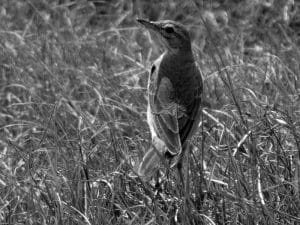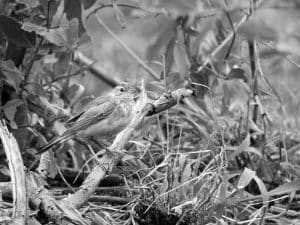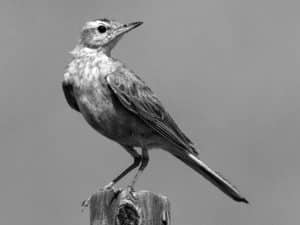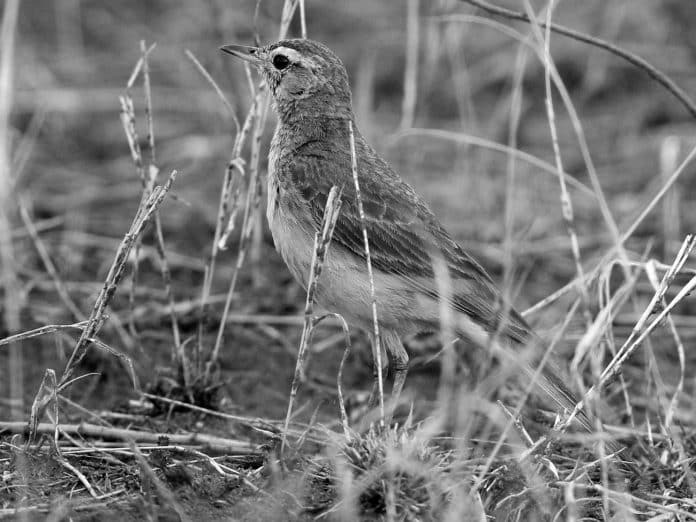Introduction to the Buffy Pipit
Nestled within the vast and diverse avian landscape of Tanzania lies a captivating species known as the Buffy Pipit. This unassuming yet enchanting bird often goes unnoticed by the casual observer, but for the keen-eyed birdwatcher, the Buffy Pipit in Tanzania is a true gem worth discovering. In this comprehensive guide, we’ll delve into the intriguing world of this subtle avian beauty, exploring its distinctive features, habitat, behavior, and conservation status, as well as providing tips for spotting and appreciating this remarkable creature in its natural environment.
Description and Characteristics of the Buffy Pipit

The Buffy Pipit (Anthus vaalensis) is a small, ground-dwelling bird that belongs to the Motacillidae family. With its unassuming appearance, it can be easily overlooked amidst the vibrant colors and flashy displays of its more conspicuous avian counterparts. However, upon closer inspection, the Buffy Pipit reveals a unique charm that captivates the birdwatching enthusiast.
- Size and Appearance: The Buffy Pipit measures approximately 14-16 cm in length, with a wingspan of around 22-26 cm. Its plumage is predominantly a warm, buffy brown color, with subtle streaks and markings that help it blend seamlessly into its grassland and savanna habitats. The bird’s bill is slender and pointed, and its legs are a pale pinkish-brown hue.
- Distinctive Features: One of the Buffy Pipit’s most notable characteristics is its distinctive eyebrow, which appears as a pale, cream-colored supercilium that extends from the base of the bill to the back of the eye. This feature, combined with its overall muted coloration, helps the Buffy Pipit maintain a low profile, making it a challenging yet rewarding target for birdwatchers.
- Sexual Dimorphism: There is little visible sexual dimorphism in the Buffy Pipit, with both males and females sharing a similar appearance. However, experienced observers may be able to detect subtle differences in the intensity of their plumage and the size of their bills.
Habitat and Distribution of the Buffy Pipit in Tanzania
The Buffy Pipit is primarily found in the eastern and central regions of Tanzania, where it inhabits a variety of grassland and savanna ecosystems.
- Preferred Habitats: The Buffy Pipit thrives in open, grassy areas, including short-grass savannas, semi-arid grasslands, and even agricultural fields. These habitats provide the ideal mix of cover, nesting sites, and foraging opportunities for this ground-dwelling species.
- Distribution within Tanzania: The Buffy Pipit’s range in Tanzania extends from the northern regions, such as the Serengeti National Park and the Ngorongoro Conservation Area, down to the central and southern parts of the country, including the Ruaha National Park and the Udzungwa Mountains.
- Habitat Preferences: While the Buffy Pipit is adaptable and can be found in a variety of grassland environments, it tends to favor areas with a mix of short and taller grasses, as well as the presence of scattered shrubs or low-lying vegetation that provide perching and nesting opportunities.
Behavior and Feeding Habits of the Buffy Pipit
The Buffy Pipit is a fascinating species to observe, with its unique behaviors and foraging strategies adapted to its grassland habitat.
- Foraging Behavior: The Buffy Pipit is primarily insectivorous, feeding on a variety of insects, spiders, and other small invertebrates found within the grassy undergrowth. It often employs a “hop-and-peck” technique, hopping along the ground and using its sharp bill to capture its prey.
- Nesting and Breeding: The Buffy Pipit constructs its nest on the ground, typically hidden within a tuft of grass or beneath a low-lying shrub. The nest is a cup-shaped structure made of grasses, leaves, and other natural materials. The female lays 2-4 eggs, which are incubated for approximately 12-14 days.
- Vocalization: The Buffy Pipit has a relatively simple yet distinctive call, which is often described as a soft, high-pitched “tsip” or “tsee” sound. This vocalisation can help birdwatchers identify the presence of the species in their local habitat.
Conservation Status and Threats to the Buffy Pipit

The Buffy Pipit is currently classified as a species of Least Concern by the International Union for Conservation of Nature (IUCN), indicating that its overall population is stable and not facing immediate threats.
- Conservation Status: The Buffy Pipit’s widespread distribution and adaptability to a variety of grassland habitats have contributed to its relatively secure conservation status. However, it is essential to monitor the species and its habitat to ensure that it remains a thriving part of Tanzania’s avian diversity.
- Potential Threats: While the Buffy Pipit is not considered endangered, it does face some potential threats, such as habitat loss and degradation due to factors like overgrazing, agricultural expansion, and urban development. Additionally, the use of pesticides and other agrochemicals in certain areas can potentially impact the species’ food sources and overall well-being.
- Conservation Efforts: Ongoing conservation efforts, such as the establishment of protected areas and the implementation of sustainable land management practices, are crucial to safeguarding the Buffy Pipit’s future in Tanzania. Birdwatchers and nature enthusiasts can also contribute to these efforts by supporting local conservation organizations and raising awareness about the importance of preserving Tanzania’s diverse avian ecosystems.
How to Spot and Identify the Buffy Pipit in the Wild
Spotting and identifying the Buffy Pipit in its natural habitat can be a rewarding challenge for birdwatchers, but with the right techniques and knowledge, you can increase your chances of encountering this elusive species.
- Observation Techniques: When searching for the Buffy Pipit, it’s essential to move slowly and quietly, scanning the ground and low-lying vegetation for any movement or subtle patterns. The bird’s muted coloration and ground-dwelling behavior can make it difficult to spot, so patience and a keen eye are crucial.
- Identification Cues: The Buffy Pipit’s distinctive eyebrow, slender bill, and overall buffy brown plumage are key identification features to look for. Additionally, observing the bird’s feeding behavior, such as its characteristic hop-and-peck foraging technique, can help confirm its identity.
- Habitat Clues: Knowing the Buffy Pipit’s preferred habitats, such as short-grass savannas and semi-arid grasslands, can also aid in locating and identifying the species. Scanning these environments during your birdwatching excursions increases your chances of spotting this elusive bird.
Tips for Birdwatching and Photographing the Buffy Pipit
Capturing the Buffy Pipit through your binoculars or camera lens can be a rewarding experience for nature enthusiasts and photographers alike. Here are some tips to help you make the most of your Buffy Pipit encounters:
- Patience and Stealth: As mentioned earlier, the Buffy Pipit’s subtle nature requires a patient and stealthy approach. Move slowly, keep a low profile, and be prepared to wait patiently for the bird to reveal itself.
- Appropriate Gear: Invest in a good pair of binoculars or a high-quality camera with a telephoto lens to help you get close-up views and capture detailed images of the Buffy Pipit.
- Timing and Lighting: Early mornings and late afternoons are often the best times to spot the Buffy Pipit, as it is most active during these periods. Additionally, pay attention to the lighting conditions, as the soft, warm light of the golden hours can create stunning photographs.
Interesting Facts and Trivia about the Buffy Pipit

The Buffy Pipit may seem unassuming at first glance, but it is a species rich in fascinating facts and unique characteristics:
- The Buffy Pipit is known to have a close evolutionary relationship with the closely related Grassveld Pipit, which is found in parts of southern Africa.
- Unlike many other pipit species, the Buffy Pipit does not have a distinctive courtship display or song, relying more on its subtle visual cues and vocalizations to communicate.
- The Buffy Pipit’s nesting habits are particularly interesting, as the female often constructs her nest in a way that incorporates natural materials, such as dried grass and leaves, to help it blend seamlessly into the surrounding environment.
- While the Buffy Pipit is primarily insectivorous, it has been observed occasionally feeding on small seeds and berries, diversifying its dietary preferences.
Other Bird Species Commonly Found in the Same Habitat as the Buffy Pipit
The Buffy Pipit’s grassland and savanna habitats in Tanzania are home to a diverse array of avian species, many of which can be encountered alongside the Buffy Pipit. Some of the more commonly sighted birds in these environments include:
- Superb Starling (Lamprotornis superbus)
- Red-billed Hornbill (Tockus erythrorhynchus)
- Lilac-breasted Roller (Coracias caudatus)
- Yellow-throated Longclaw (Macronyx croceus)
- Kori Bustard (Ardeotis kori)
- Crested Francolin (Dendroperdix sephaena)
- Mosque Swallow (Hirundo senegalensis)
Observing these species alongside the Buffy Pipit can enhance your birdwatching experience and provide a more comprehensive understanding of the rich avian diversity found in Tanzania’s grassland ecosystems.
Conclusion: The Importance of Conserving the Buffy Pipit’s Habitat
The Buffy Pipit, with its subtle beauty and unassuming presence, is a testament to the wonders of Tanzania’s avian diversity. As we explore and appreciate this captivating species, it is essential to recognize the importance of preserving its grassland and savanna habitats for the benefit of future generations.
To support the conservation of the Buffy Pipit and its natural environment, consider donating to local wildlife organizations or participating in ecotourism initiatives that promote sustainable practices. Your involvement can make a significant difference in ensuring the Buffy Pipit’s continued presence in Tanzania’s vibrant ecosystems.
By understanding and appreciating the Buffy Pipit, we can foster a deeper connection with the natural world and inspire others to join in the effort to safeguard Tanzania’s avian treasures. Let the Buffy Pipit’s quiet elegance be a reminder of the importance of protecting even the most unassuming members of the natural world.

































